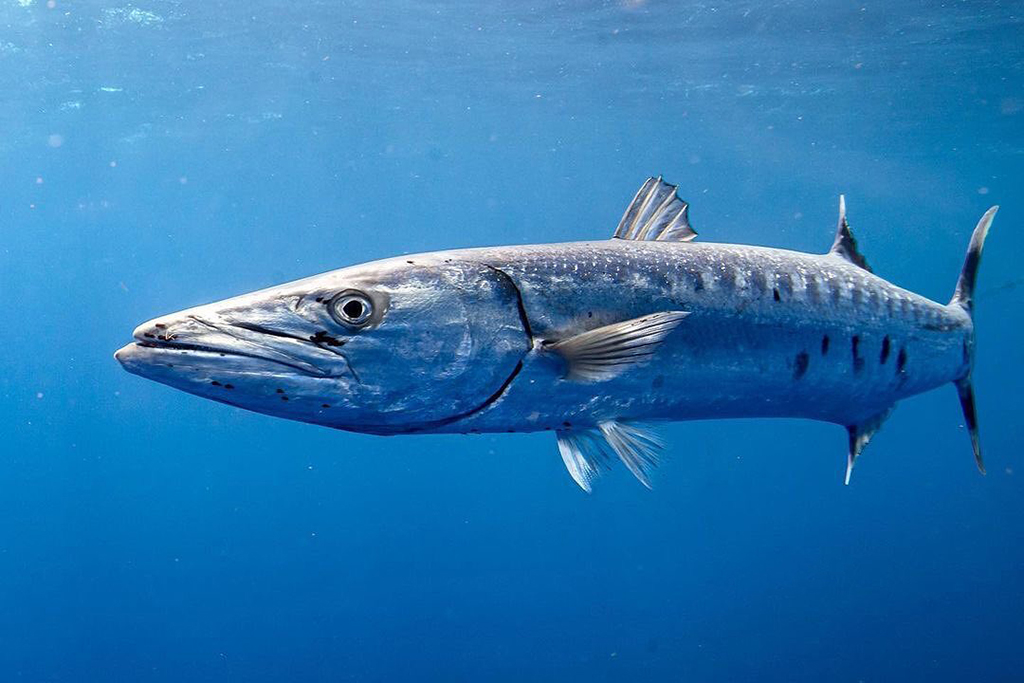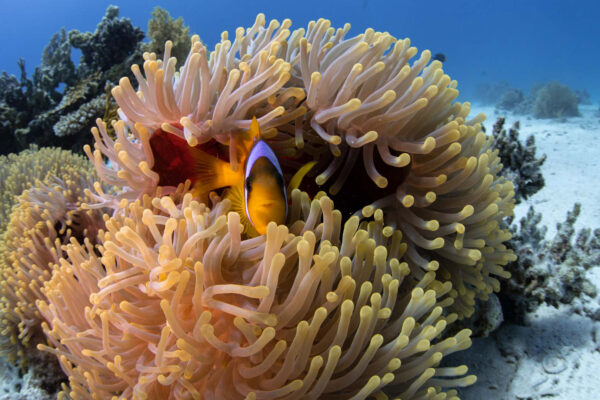Barracuda
Shiny big fish, a sparkling sight to see. They even like shiny things themselves! Speaking of shiny, their teeth are incredibly sharp. The great barracudas have a large mouth containing two sets of teeth. The outer row of small, razor-sharp teeth are for tearing, and the inner set of larger teeth for piercing. These closely set teeth together to rip into the flesh of their prey. The long needle-like teeth fit into holes in the opposing jaw, which allows the barracuda to fully close its mouth. When hunting, they change between swallowing smaller prey whole and cutting larger prey in half to be devoured in pieces.
Barracudas also have incredible eyesight. They hunt mainly by sight, barracudas sometimes attempt to steal fish from spear fishers or approach divers, mistaking the shine of something with the shiny fish. Despite this behavior, barracudas rarely attack humans unprovoked.
Adult great barracudas are large fish – some exceeding five feet long (1.5 meters) and weighing more than 100 pounds (45.3 kilograms) – with a lifespan of around 14 years!
Great barracudas feed on a lot of different fish such as jacks, grunts, groupers, smaller barracudas, snappers, small tunas, mullets, killifish, herrings, and anchovies. The top speed for the species may be as fast as 36 mph (58 kph). Given their size and speed, barracudas do not have many predators capable of catching and eating them. But sadly they can also be eaten by sharks, killer whales, giant tuna, bigger barracudas, and dolphins.
- Barracudas’ upper sides can have up to 23 dark bars.
- Barracudas reproduce during the springtime.
- Barracudas don’t look after their fertilized eggs.
- Barracudas are on the main menu for dolphins.
- Barracudas have 2 rows of teeth!




